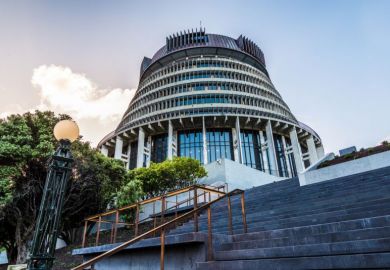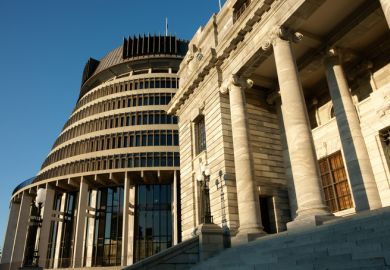The New Zealand government’s financial lifeline will not solve the problems of universities whose solvency depends on taxpayer grants and student fees, sector leaders said.
Universities said the extra NZ$128 million (£62 million) announced on 28 June will alleviate some of the cost pressures threatening scores of courses and more than 700 jobs. “But it does not remove the need for us to be sustainable,” said Victoria University of Wellington (VUW).
Auckland University of Technology said the additional funding was “appreciated…while details need to be considered and the funding benefits will only be felt next year”.
The bailout, averaging NZ$16 million per university over two years, falls short of the needs of those in deficit. VUW proposes 230 job cuts to counter a predicted NZ$33 million deficit this year, while the University of Otago – which is reportedly targeting several hundred positions – says it needs to save NZ$60 million.
The seven universities that have so far reported their 2022 financial accounts collectively left a combined surplus of just NZ$31 million. It would have been considerably worse if the University of Auckland had not finished the year ahead by NZ$98 million. The other six institutions shared a NZ$67 million deficit after budgeting for a NZ$44 million surplus.
While vice-chancellors had anticipated depressed earnings from international students, the decline in domestic demand took them by surprise. “Enrolments were forecast to rise,” finance minister Grant Robertson told a press conference. “That’s the basis on which we were all working.”
He said the slump in demand had left the government with a spending shortfall that it would normally reprioritise or retain in consolidated accounts. “On this occasion, given the pressure that universities and other degree providers are under, we made the decision to recycle that money back.”
Sector sources say the government was slow to take that action, having done likewise in 2019 when take-up of free tertiary places proved lower than predicted. Roger Smyth, a former head of tertiary education policy at New Zealand’s education ministry, said the government’s National Party predecessors had also reallocated unspent subsidies to universities following an enrolment slump last decade.
Mr Robertson said the sector should shoulder some of the blame for its financial problems. “Universities…need to take a look at their own structures [and] administration costs. I’ve observed increasing amounts of money spent…on marketing.”
Education minister Jan Tinetti said a forthcoming review of higher education funding would consider all options. “Nothing’s off scope at this stage. We want to [develop] the best possible funding mechanism going forward.”
Acting prime minister Carmel Sepuloni denied that the funding lifeline was a belated “election year move” to quell unflattering headlines, telling Radio New Zealand that many causes of universities’ financial woes – including inflation and the lure of a “gangbusters” labour market – were beyond the government’s control.
Register to continue
Why register?
- Registration is free and only takes a moment
- Once registered, you can read 3 articles a month
- Sign up for our newsletter
Subscribe
Or subscribe for unlimited access to:
- Unlimited access to news, views, insights & reviews
- Digital editions
- Digital access to THE’s university and college rankings analysis
Already registered or a current subscriber?












